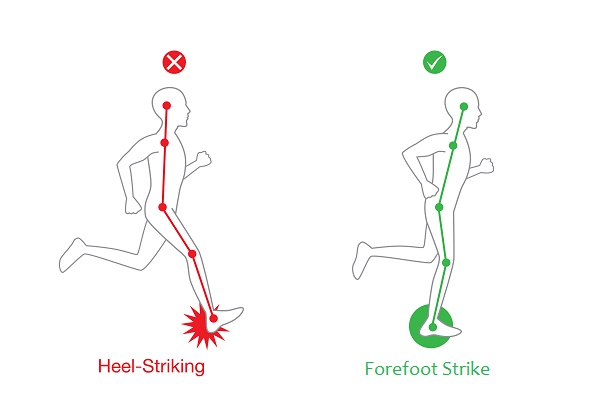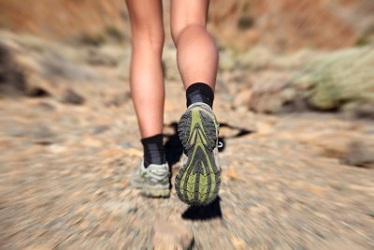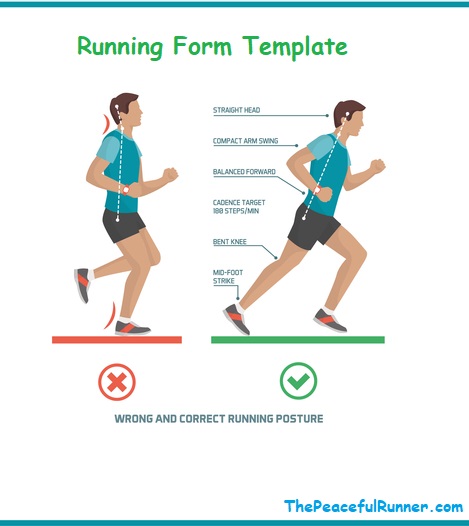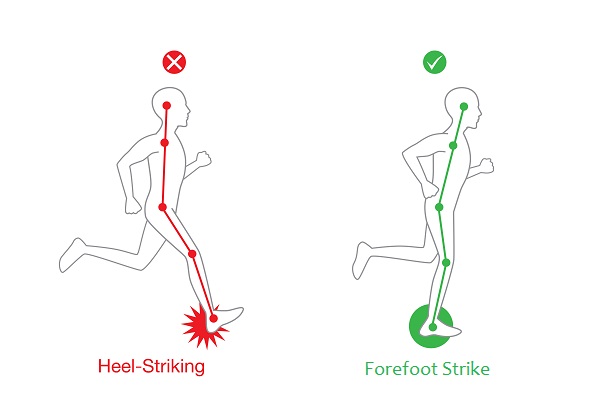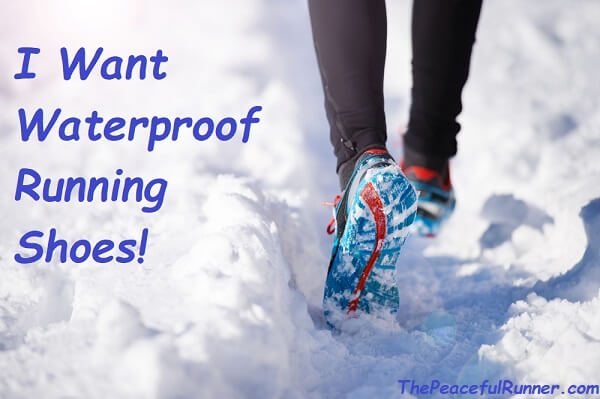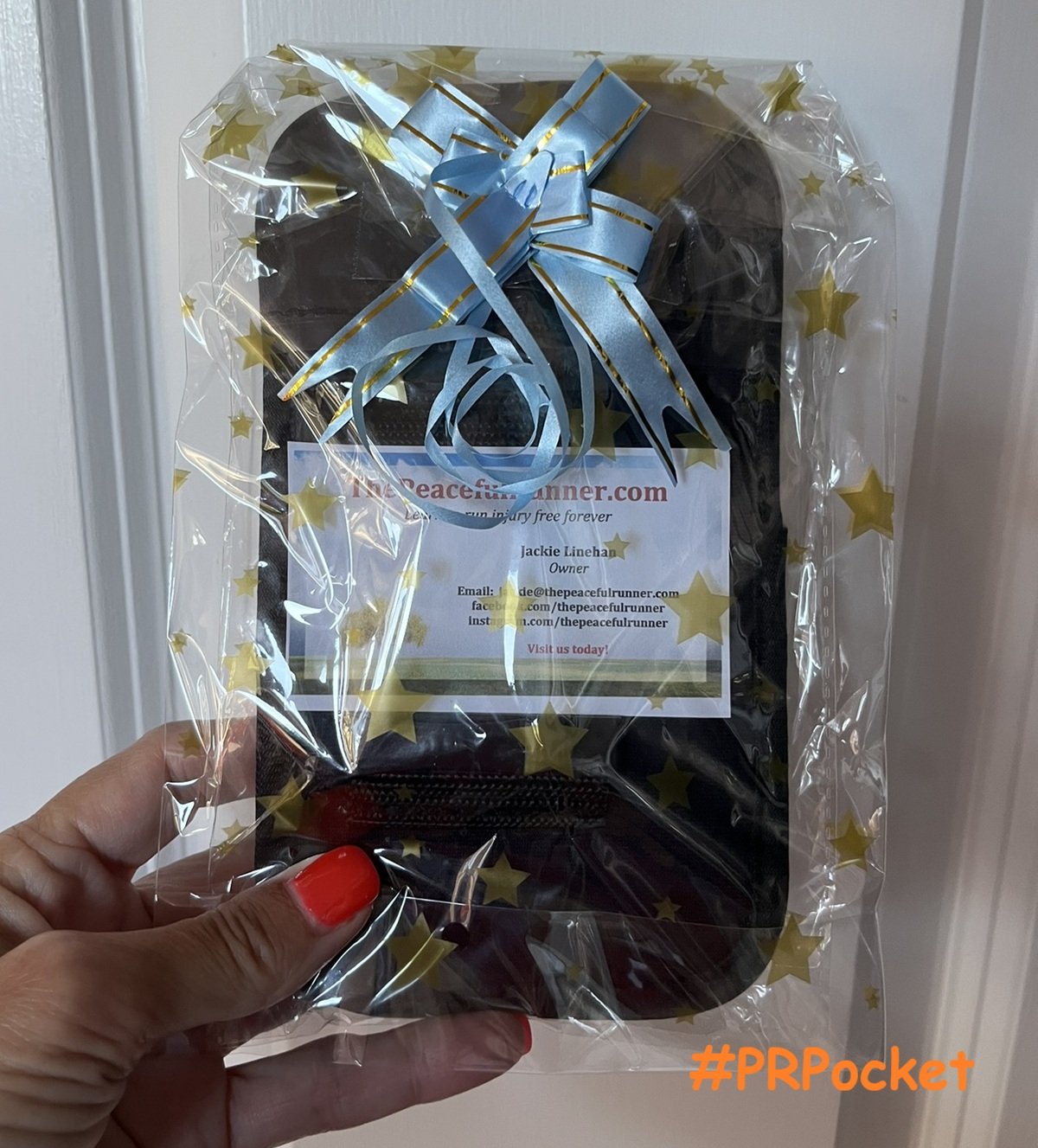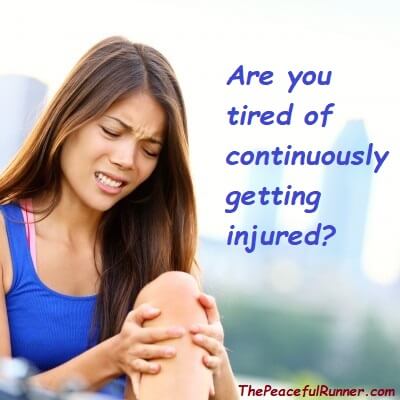- Home
- Running Form
- Running Foot Strike
Does your Running Foot Strike Matter?
FTC Disclosure: As an Amazon Associate, I earn from qualifying purchases. Learn more
Is your running foot strike causing running injuries? Should you change how you land on your feet? Would a different foot strike help you run faster and with less injuries? Get all the information you need to make an informed decision here.
The foot strike has been a hot topic for debate in recent years. There is a lot of information available and I have read most of it to determine if either particular method is more conducive to efficient, injury-free running. As the foot is the only point of contact while running, it is essential to understand how our foot strike affects our entire body.
There are numerous opinions and an abundance of advice available regarding the desired running foot strike and there are proposed reasons for why variations exist. Some say our foot strike is innate and shouldn't be messed with. Others say that the type of shoe you wear determines your foot strike and still others will say it depends entirely on your running form and how you have trained. Hopefully, the following will provide you with the information you need to help you decide if you want to change your foot strike or not.
What are the Various Running Foot Strikes?
The three foot landing positions common for runners are: heel strike, forefoot strike and mid-foot strike. A heel striker lands heel first followed by the forefoot. A forefoot striker lands on the ball of the foot followed by the heel. A mid-foot striker lands on the forefoot and heel almost simultaneously.
Many consider the mid-foot strike as being an intermediate landing as it a variation of both of the extremes: heel striking and forefoot striking. It is a middle of the range landing which will probably change over time as the runner moves towards either end of the range. Lieberman et al. (2010) For this reason, we will only compare heel striking and forefoot striking.
Today, the majority of runners heel strike. There is a general opinion that runners heel strike because of the design of the modern running shoe. The conventional running shoes used in modern times have a well-padded heel and firm arch support. Could this design cause runners to land with their heels first? If we ran with less padding, would we still land on our heels?
Prior to 1970 when the modern running shoe was invented, humans ran long distances in their bare feet, running flats or some other form of minimal footwear. How do you think they landed on their feet? Studies show that in minimal shoes or bare feet, runners tend to have a forefoot strike. An article published in the US National Library of Medicine explains Why Forefoot Striking in Minimal Shoes Might Positively Change the Course of Running Injuries. Take the time to watch how children run—they run naturally and land on their forefoot.
Does a Heel Strike Cause Injuries?
There is currently no scientific evidence to prove that a heel strike causes injuries. However, studies show that a heel strike has a greater impact transient than a forefoot strike. There is a sudden break at impact that occurs in a heel strike and it occurs whether or not the runner is wearing shoes. The modern running shoe helps to reduce the impact by spreading the force over the rest of the foot, but does not eliminate the impact transient. Lieberman et al. (2010)
Because there is less impact when runners land on their forefoot, many would propose that there would be less running injuries if runners landed with a forefoot strike. This conclusion sounds quite logical; however, it has not been proven to date and although many agree with forefoot running, some still dispute it.
The Late Gordon Pirie, Olympic medalist, is adamant that the initial contact should be on the forefoot. He recommends landing on the extreme outside edge of the ball area of the foot and then rolling gently inward until flat. He is the author of Running Fast and Injury Free. For a free copy of his controversial Ebook, join The Peaceful Runner VIP Club.
Jack Heggie, a Feldenkrais practitioner, recommends in his book Running with the Whole Body that our foot should land centrally on the heel (not the back end) and directly under our center of gravity. Once the heel contacts, the pressure should then continue up the outside of the foot and towards the toes until take off.
Danny Dryer recommends in his book, Chi Running, that runners lean from their feet, placing their center of gravity ahead of their foot strike. This causes the runner to land with a midfoot strike. He believes that heel striking is a major cause of knee injuries among runners and that a mid-foot strike helps to evenly distribute the load and allows the lower leg to function as it should.
Confused About the Correct Running Form?
Our Free Running Form Template Can Help...
Get the running form template now!
Our template provides a straightforward explanation of the components of good running form, eliminating any confusion about how to improve your running technique.
Want to Change your Running Foot Strike?
If you feel you want to change how your foot lands while running, do it gradually as any drastic change in your running style is likely to cause injuries.
As our running foot strike appears to be greatly affected by the type of running shoe that we wear, it would follow that the easiest way to change our foot strike is to change the type of shoes we wear or go barefoot running. However, our running posture also has a great affect on how our foot lands.
It is more difficult to land on our forefoot if we are wearing running shoes with thick heels and rigid arches. You may find yourself over-pointing your feet into an unnatural position while trying to achieve a forefoot strike. However, it is possible if you develop the proper technique as shown in the video below.
If you decide to run barefoot or to use minimalist running shoes, you will need to build up the muscles in your feet and your calves. Give yourself time to make the change. The usual rule of thumb applies - increase your new running style by no more than 10 percent each week. However, let your body be your guide. If your muscles become sore, make the transition more slowly.
This video has some quick running drills to help you transition to a forefoot strike. Coach Jeff demonstrates how you can improve your running form properly and safely with these easy to follow exercises.

Changing Your Running Foot Strike
Some runners are motivated to change their running foot strike to prevent injuries. Others believe it will make them faster and others just prefer a more natural running style.
A British Study showed that when a runner forefoot strikes, his foot has significantly less ground contact time than a heel striker. The study also recorded strong large correlations between ground contact time and average race speed. Therefore, it is possible that having a forefoot strike can result in faster running. Note: Forefoot striking and mid-foot striking showed similar ground contact time in this study.
Whatever your reason for wanting to change your running foot strike, make sure you take a look at your whole running form -- not just how your foot lands. Is your foot landing directly under your center of gravity? Are you leaning slightly forward from the ankles? Is your stride short and swift? Running with the proper technique will help ensure your remain injury free.
A forward lean from the ankles will help ensure that you are landing on your forefoot with your feet under your center of gravity. It is essential that you do this properly. If you are landing on your forefoot and your foot is landing out in front of your body, you are risking injury to your feet, such as top of foot pain or a foot stress fracture. Download our free Running Form Template.
Learn how a Forefoot Strike While Walking can improve your running form and your running foot strike.
Please feel free to share your experiences or express your opinion by commenting below.
- How does your foot land when running?
- Have you tried a different style of running?
- Did it improve your running performance?
Please share your experience with your fellow runners! It's easy - just enter the title of your comment to begin....
Read Other Comments on Foot Strike!
Click below to see comments from other runners...
Knee Pain is Gone
Last year a clerk at the running store mentioned I should be running on my forefoot. This was in response to my description of my foot strike and desired …
New to running
I have been running for about 4 months. I was doing great for 3, running about 4 miles 4 times a week with a long run of about 6. Then I was plagued with …
Foot strike
I have a great deal of respect for the work of Moshe Feldenkrais. But despite Heggie's book, there is nothing in the Feldenkrais method which points to …
Back to top of Running Foot Strike
Return to Running Posture
- Home
- Running Form
- Running Foot Strike
FTC Disclosure: As an Amazon Associate, I earn from qualifying purchases. Learn more
NEW FEATURE - DISQUS COMMENTS!
Login using Facebook, Twitter, Google or Disqus.
Recent Articles
-
Have you ever had a run where everything suddenly felt effortless?
Dec 18, 25 11:01 AM
-
How to Choose the Best Treadmill for Your Home
Dec 10, 25 07:13 AM
-
Winter Running Tips and the Best Waterproof Running Shoes
Nov 15, 25 01:55 PM
-
When the Music Stops, Awareness Begins
Nov 05, 25 10:54 AM
-
Get yours in time for gift giving!
Oct 24, 25 12:32 PM
-
Change How You Deal with Running Pain
Oct 10, 25 08:53 AM
-
Surprising Benefits of Backwards Running
Sep 15, 25 12:40 PM
-
It's an Awesome Product!
Aug 28, 25 09:25 AM
I went out for a walk this morning and I used the #PRPocket for the first time. I had to check at least 3 times because I thought I lost my phone (iPhone -
Running in Hot Weather: What Every Runner Needs to Know!
Aug 14, 25 01:00 PM
-
Sick of Dieting? You’re Not Alone — And There Is a Better Way.
Jul 30, 25 12:18 PM

